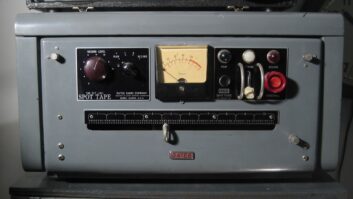LOS ANGELES�I wonder if we can learn something from last week�s RAJAR results for the U.K., and then apply it to what we think we know about broadcasting in the U.S.�
I wrote last week about those results, which basically say digital radio is doing well there. There were subsequent articles that are also shed further light on the results, from people that are in the midst of what is going on there.�
James Cridland analyzed the results, as shown by allaccess.com.� Here are the salient points that he made:
�������AM/FM is in decline, but radio isn’t.�AM/FM is now at its lowest ever figure, at 54.3 percent share of total time spent listening. However, this isn’t a decline in radio listening � radio’s cume is about the same as it’s ever been, at just below 90 percent. There is, however, a decline in the use of AM and FM.
�������Digital now has as many listeners as analog.Capital FM is all over the U.K. from eleven specific local radio stations and around twenty FM transmitters, as well as digital radio. It has 7 million people listening every week. Conversely, Bauer’s KISS Network only has three FM transmitters, and lots of digital-only services, and it has 6.1 million listeners.
�������The young are not deserting radio.�RAJAR also asks questions about social media use and other things. Results are that almost a third of social media users � 31 percent � claim to get updates about their favorite radio station jock. More importantly, for younger audiences (15-24 year-olds), 44 percent of social media users get those updates. James asks: �If radio isn’t of interest for younger audiences, as we’re repeatedly told, then why do they care more about their favorite radio station than the rest of us?� Radio and social media go together and radio is still of real interest for younger listeners.
�������Internet isn’t growing as much as other forms of broadcast.For radio stations, internet streaming grew by 6.3 percent year over year. It’s now at 6.8 percent of all radio listening. However, DAB digital radio now accounts for 25.9 percent of all radio listening and it grew by 9.3 percent year over year.
It�s not just James Cridland espousing the viability of radio in the U.K.� Simon Kilby, Head of Marketing for Bauer Media, in MediaWeek.co.uk was quoted thus: �…UK digital radio listeners are 19 percent more likely to notice adverts on the radio than the average UK adult.� On top of this, the latest AA/WARC expenditure report predicted that radio ad spend will have an annual rise of 4.9 percent in 2015 � further signs that the industry is growing.
�…Ofcom recognized the need and demand to create more space for digital radio, a huge moment for the industry. This proves radio’s popularity and also creates the opportunity for the commercial radio industry to continue to extend its reach, opening up new potential for advertisers.�
Is it possible that the nation that invented commercial radio is being “schooled” by its overseas cousins?







